JARARACA - BRAZILIAN ARMY PROTOTYPE 4X4 VEHICLE (3D SCALE MODELS – 1/72 SCALE)
This article is part of a series:
- HISTORY
The idea of producing a 4x4 light armored vehicle for the Brazilian Army is not new, it dates back to the early 70's, when the first idea appeared in the Regional Motomechanization Park of the 2nd Military Region of São Paulo – PqRMM/2.
It would be a way to replace the old jeep as an exploration vehicle in mechanized cavalry units, given its vulnerability and total lack of armor. In this way, the first design called AUTO MACHINEGUN 4x4 appears.
As they had started another project, whose execution was already in the construction phase of a prototype, called Veiculo Blindado Brasileiro ( VBB - Brazilian Armored Vehicle) which was to be the replacement for the old M-8 Greyhounds, from the WW2, used by the 1st Reconnaissance Squadron in the Brazilian Italian Campaign (1944-45). The project 4x4 vehicle ended up, not going ahead, for the simple reason the Army wanted a 6x6, due to experience in the ETO at WW2. This option would create a new project, which was later produced in series in partnership with the private company Engesa S/A, becoming an icon of the Brazilian defense material industry known by the name of EE-9 CASCAVEL.
The success of the CASCAVEL in the Army units and its acceptance in the international market made the acceptance of a 4x4 light armored vehicle very difficult.
ENGESA developed a wide range of armored vehicles aimed at the foreign market and among the various models, a variation of the AUTO MACHINEGUN appeared, whose new design was improved and a series of 63 vehicles was made, for export (photos 1 to 3 - veicules used by Gabon, Ecuador and Uruguay - UN peacekeeping mission in Haiti) since the Brazilian Army does not operate any, even though it has two prototypes (one for reconnaissance and one for chemical warfare - photos 4 to 7).
The idea was to produce a highly mobile reconnaissance vehicle, equipped with an external 7.62mm or 12.7mm (.50) machine gun in an armored revolving turret, in its standard configuration, equipped with four smoke grenade launchers. Other versions may employ Milan-type anti-tank missiles. The crew consists of a driver, a commander and a gunner. The diesel engine was placed in the rear, and the five-speed mechanical transmission in the front and one in the reverse was adopted. Its steering was integral hydraulic, allowing mechanical activation in case of emergency, 24 volt electrical system with civil and military lighting circuits, stamped steel wheels, “bulletproof” tires with automatic inflation system were also part of the initial configuration adopted by the vehicle. The optical equipment consists of periscopes for observation of the driver and commander, in addition to a passive night vision system.
Being extremely compact, its maximum weight was around 5,800 kg, with a range of 700 km, with 140 liters of diesel, a maximum speed of 100 km, being able to climb ramps of 60% and a maximum lateral inclination of 30%, overcome vertical obstacles of 400 mm, being able to pass in trenchs of 800 mm.
Its mechanical components all came from the national automotive industry, used in trucks, which facilitated the logistics of spare parts. Its engine was a Mercedes Benz OM-314A, four-cylinder in-line, turbocharged and its gearbox was a Clark model 240 V, mechanical, with Engesa drop box, with helical gears, constant gear and l.0:1 ratio. . Its clutch was of the single-disc type, dry, hydraulic and the gearbox Engesa, mechanical, two-speed, constant engagement. The steering system was a ZF do Brasil model 8058, hydraulic and its suspension type rigid, floating axle, with semi-elliptic springs and double action dampers, Bendix drum brake system with air over hydraulic activation and mechanical parking brake.
It was not the best vehicle designed by ENGESA, it received negative ratings on some items from their own engineers, however all production was exported to countries such as Uruguay (16), Guinea (10), Gabon (12), Ecuador (10) and Cyprus (15), and still in operation today.
Designed to replace ¼ ton vehicles (jeep's and mutt's, p.ex), its low silhouette and easy maneuverability in varied terrain make it an extremely operational vehicle, even for patrolling urban areas as a police force, in operations that require high offensive power, providing good protection to its crew and, given its small dimensions, it can be, easily, the ideal vehicle for rapid attack units, protection for retreat, pursuit, etc.
- THE MODEL
Produced by one small brazilian companie - 3D SCALE MODELS - the kit is made in a 3D printer, in 1/72 scale.
Primer, paints, wash and the varnish are manufactured 100% in Brazil, by a company called TOM COLORS.. The inks are polyester type, packaged in 20ml bottles.
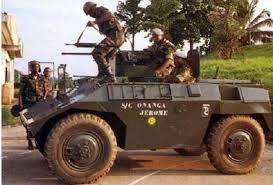
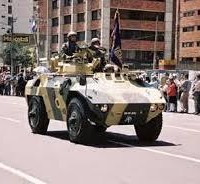

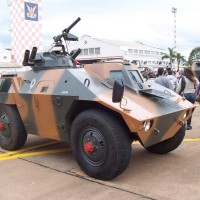
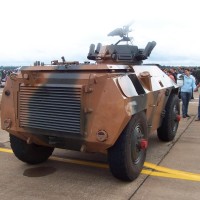
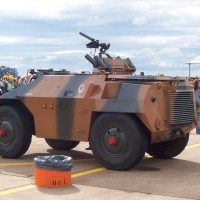
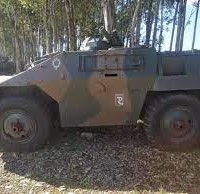
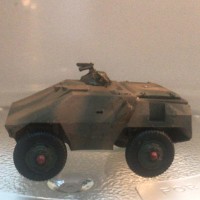
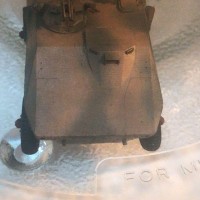
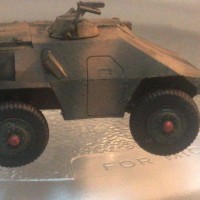

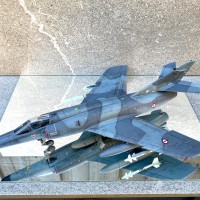

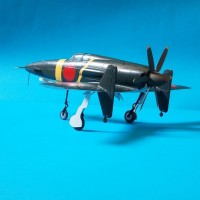
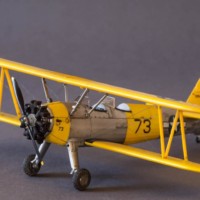
great... its look very nice...
Nice looking, Sandre @lima
Thanks for sharing the history background, very interesting.
Great looking model, Sandre! Amazing historical section, it is really wonderful to learn so many details!
the kit cost US 30,00
4 attached images. Click to enlarge.